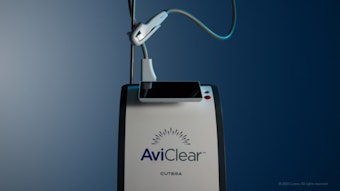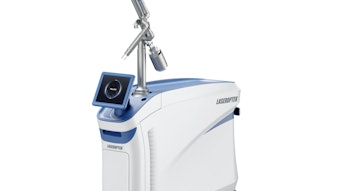
When you graduated medical school, retirement was likely the last thing on your mind. But if you have since moved on to private practice ownership, it’s time to consider what will happen to your practice in the event of death, disability or retirement. Keep in mind, the unique nature of medical practice ownership necessitates pre-planning for both the expected and unexpected. “Succession planning is more complex in the medical field because only licensed practitioners are able to run these businesses,” says Lauren Maxie, managing attorney with NC Planning in Raleigh, North Carolina. “Unless they have followed you into your field, you cannot have a spouse or child listed as your successor.”
Succession Planning for Group Practices
Multi-physician practices are at a distinct advantage when it comes to succession planning. In these cases, the practice can create a buy/sell agreement between the different physicians within the group. “The buy/sell agreement is a legally binding document that says, ‘If any of these events were to occur’—and this would include death, disability, retirement and any number of additional triggering events—‘I am automatically bought out of this company by the other licensed practitioners in this practice,’” says Maxie.
The buy/sell agreement includes detailed provisions on valuation of the practice as well as payout terms. “Once the writing is on the wall regarding who is leaving and who is staying, it can be difficult to come to an agreement on value,” says Maxie. “The doctor who is retiring often thinks the practice is worth significantly more than the guys who are staying, so you do need to include a provision on the terms that govern valuation. These provisions most often involve bringing in an appraiser to look over the company’s financials.”
A second provision dictates the payout terms. Jeff Cohen, Esq., a healthcare attorney based in Florida, explains that there are usually two ways to pay for a practice when selling to a physician associate or junior partner: on a pre-tax basis or on a post-tax basis.
In a pre-tax purchase, the employed or associate physicians who are becoming the owners of the medical practice have a portion of their salaries or bonuses applied to the purchase price. In a post-tax purchase, they get their income, pay taxes on it, then write the seller a check.
A second consideration is the time period over which the payout is made. “It is pretty rare that the payout would be over a one-year period because that causes too many problems for the business,” says Larry Friedman, CPA, MT, director of tax services at Barnes Wendling CPAs in Cleveland. “Paying some sort of deferred compensation over time to the departing physician not only allows the business to continue, it also allows the practice to claim tax deductions for the buyout. Conversely, if the departing owner just sells his shares to the remaining physicians, he gets good capital gains tax results but it’s a bad tax result for the business.”
Sellers usually favor getting paid upfront with the buyer’s after-tax dollars, but will often compromise and agree to accept at least a portion of the purchase price on a pre-tax basis. This is an important area of negotiation as your practice crafts an agreement.
Even with an approved buy/sell agreement in place, disagreements can occur. To ensure a smooth transition, Matthew J. Silla, ASA, CFA, principal of Barnes Wendling, who runs the company’s business valuation department, recommends reviewing the agreement annually with all parties. “Make sure they understand what’s in it and that everyone has some concept of what the business is worth,” he says. “If there is a huge gap in understanding regarding the value, you may want to bring in an independent appraiser to perform a valuation.”
Image: Getty Images.
[pagebreak]
Practices may also want to purchase disability and/or life insurance policies for the physician-owners to cushion the blow to the practice in the case of unexpected death or disability, says Friedman.
In some cases, practice owners may have a family member enter the practice. Typically, this is a son or daughter who has followed in the parent’s footsteps as a dermatologist or plastic surgeon, for example. The ultimate goal is to have the child join the practice and eventually take over ownership. “It is always a delicate transaction to bring that individual into the ownership of the company as other employees are there as well,” says Maxie. “Most often, the best strategy is to have the son or daughter work their way up as an employee and earn into ownership over time, so they can see the value of what you have built and familiarize themselves with the operations. You should have a succession plan in place that would give the son or daughter vested ownership in the case of catastrophe.”
Succession Planning for Sole Practitioners
Succession planning is more difficult for single-owner practices because they do not have partners with whom to institute a buy/sell agreement. But there are still steps that can be taken to preserve the value of your assets. In rare cases, two separate practice owners may enter into a buy/sell agreement. “I have seen individual sole practitioners who have practices in different regions—or even friendly competitors in the same region—enter into an agreement that says, ‘If something happens to me, you are agreeing to purchase my practice according to these terms and if something happens to you, I am agreeing to purchase your practice,’” says Maxie. “That’s not as common as internal succession planning but something certainly to be aware of as an option.”
If this type of an agreement is not feasible, there are some internal succession planning steps you can take to protect your business assets. If you own the property where you practice, place the real estate in a separate LLC and lease it to your professional practice or business, and do the same with your office and medical equipment.
If your corporation is a professional corporation or professional association (PC, PA) and your spouse is required to sign a personal guarantee for capital equipment, and he or she is not a physician, have the lease holder place a lien on the business for the value of the personal guarantee. (This may be against the accounts receivable.) The purpose for this is that in the event of your death, a lending institution has every right to collect any remaining balances of the original debt against your spouse.
Planning Your Retirement
Sole practitioners who are thinking of retiring or leaving private practice have a few options. They can sell their tangible assets—property and equipment—and close shop, seek a buyer or bring on a younger physician who will then take over the practice through a buy/sell agreement. “In these cases, the practice will have to support the new doctor as he builds his own patient base, so there is a big upfront cost,” says Friedman. “This type of transition should happen over at least a few years. It is not something you can decide to do in January in hopes of leaving in June.”
If you plan to sell the practice to an outside physician, Maxie recommends starting the process at least five years out. This gives you time to build the value of your business.
Ultimately, your practice’s greatest asset is you, the doctor—your name, your skills and your reputation. This is why Maxie suggests that as a first step in preparing for a sale, owners look at the practice name. If you are using your given name, create a DBA that allows you to move from “John Smith, MD, dermatologist” to “North Carolina Dermatology,” for example. “We encourage practitioners to take their names off the door so the public will associate their services with the new practice name rather than the doctor’s name,” says Maxie.
Image: Getty Images.
[pagebreak]
If you do not already have them, put internal processes and protocols in place and in writing. As your retirement date nears, bring in a practice manager and hand over the day-to-day operations to him or her.
You will also want to get your financials in order. Trim variable expenses by reviewing all ongoing charges and keeping supplies to minimum inventory levels; sell capital equipment that is no longer generating revenue; renegotiate equipment and service contracts wherever possible; minimize accounts receivable by offering discounts to patients who have high balances and/or selling your receivables to a broker to increase your cash flow; and reduce payroll if you have employees who are no longer performing to their maximum potential.
“Look several years out, build good will for the company name and then slowly have the doctor ease out of the day-to-day operations,” says Maxie. “If your practice runs like a well-oiled machine, there’s less fear that if you leave and another licensed practitioner comes in, all of the patients are going to leave with you.”
Additional assets that offer value to buyers include:
- Capital Equipment: You have probably depreciated your equipment to the fullest, however it may still hold value to a buyer since it can still generate revenue.
- Websites: Your website, if properly optimized, has quite a bit of value since it can be a continuous means of generating prospective patients. Ensure that you maintain your
URL and continue search engine optimization (SEO) until the very end. - Electronic Medical Records (EMR): Your EMR contains all patients’ medical histories and financial records. This is an extremely valuable asset. Do not let ongoing technical
support expire. - Real Estate Property: If you happen to be in a high socioeconomic demographic location, the value of your practice is ultimately higher simply due to the type of patients the locale will generate.
When you are ready to list your practice for sale, an industry-specific business broker can help market the practice and keep the sale confidential. “This is important,” says Maxie. “You want to maintain confidentiality so that patients and employees are not aware that you’re trying to sell, which can cause them to jump ship.”
She recommends starting with your own team when seeking business brokers and appraisers. “Talk with your healthcare attorney first and maybe your CPA,” says Maxie. “Talking with your team that is already in place tends to bring the best referrals.”
Once you find a buyer, the buyer and seller will hammer out a letter of intent (LOI), which lays out the formal terms of the sale, including what the individual is buying, how much they are buying it for, noncompetition provisions and any other key terms of the sale. “Once you have the LOI completed, it’s typically about 60 to 90 days to close the sale,” says Maxie. “You have to go through a lot of due diligence, including forensic accounting to make sure there are no liens or unknown encumbrances on the assets you’re selling.”
Image: Getty Images.
[pagebreak]
Making the Transition
Once transfer of the business has been settled, there are several steps you can—or must—take as you transition away from the practice. You do have a professional obligation to notify your patients of the change in ownership. “Most often we frame this as a marketing piece,” says Maxie. “The seller sends a letter to the patients saying, ‘I am leaving the practice to spend more time with my family. It has been a wonderful XX years. I am placing full faith and confidence in Dr. Jones, and I think he/she is going to be a fantastic fit.’ Then the buyer sends a letter introducing him- or herself to patients by saying, ‘I am excited to become your provider and take part in this new opportunity. Here are a few things we’re planning to do in the coming year to enhance our service to you.’ It’s an opportunity for the buyer to share how things are going to improve.”
In some cases the departing physician may stay on for a few months to help in the transition, but Maxie notes that this is the exception rather than the rule—and is done solely at the discretion of the buyer. “Most buyers want to get in there and they want a clean slate,” she says. “They want to pick up the ball and run the practice their way.”
With the changing landscape in medicine, Friedman and Silla are seeing more sole practitioners simply close shop when they are ready to retire. “If the practice doesn’t have a lot of fixed assets, the value is really in continuing patients, so older physicians will often practice well past 65 and then retire and close the practice,” says Silla.
If you are unable to find a buyer or choose to close your facility, you’ll need to:
- Set a date to formally close your practice;
- Ensure that all of your contractual and financial obligations are met;
- Plan for storage or custody of your patients’ charts;
- Contact your patients and give them formal notification of the closure;
- Find another practitioner who is willing to care for and treat your patients;
- Resign from any hospitals with which you have privileges.
Planning ahead will help you maximize the value of your practice as you prepare for retirement and ensure that your heirs will have a clear plan for transferring your business assets.
Jay A. Shorr, BA, CMBM, CAC I-XIV and Mara Shorr, BS, CAC II-XIV are partners in Shorr Solutions, a medical practice consulting firm specializing in the operational, administrative, staff training and financial health of cosmetic, aesthetic and plastic surgery medical practices. Contact this father-daughter team at www.ShorrSolutions.com or [email protected].
Image: Getty Images.











